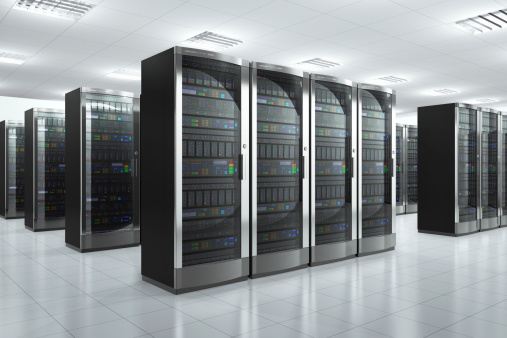If it’s time for a new server, your small business should consider the following factors when weighing your options. First of all, let’s assume you have decided a Cloud option isn’t right for your needs. For the purpose of this article, we will continue on as if you have decided on a premise based solution.
The first step in deciding on a new server is to determine if you want a Tower or rack solution and also if you have the physical space required to install your choice. Many small businesses use Tower servers, but if you need more than a couple servers, you should examine the costs of a basic 4 post rack to house all your equipment. If you already have a rack, then determine if you have enough space available to hold the new unit.
The next step is to examine what goes on the inside. This consists of a needs assessment for what the workload will be on the new box. Will it be virtualized or connected to a Storage Area Network (SAN)? Will it be an Active Directory (AD) server or a Database server (SQL box)? Answering these questions will point you in the right direction. At a basic level, you should consider the following:
How much Central Processing Unit (CPU) do you need?
- You can get single, dual or even quad CPU’s. Then you’ll need to decide between Intel and Advanced Micro Devices (AMD) and check the Ghz speed rating, but be careful. The newer CPU’s may look slower in numeric rating, but in reality be much faster.
- A single newer generation CPU is very fast and has multiple virtual cores so it may be more than enough to meet your needs. Or, a dual CPU might really accelerate your database access. Ask your line of business software supplier for recommendations and be sure to run any configuration by them prior to purchase.
How much disk and what speed?
- Many new clients assume all disks are pretty much the same and buy based on space. This isn’t true.
- Look at rotational speed (RPM) and if it is Serial Attached SCSI (SAS), Serial ATA (SATA) or Solid State Drive (SSD). SSD’s are incredibly fast, but very expensive at the server level. SATA drives are cheapest, but also slowest. SAS is faster than SATA.
- Check the interface speeds. Typically, these are rated 3G, 6G or now, the newest, 12G speeds. What looks like a great deal on a huge capacity drive might not be a good buy at all.
- Finally, decide on the right Redundant Array of Inexpensive Disk (RAID) card and configuration. RAID10 is best practice for a database, but RAID5 will allow you to save some money. Don’t skimp on the disk, it’s not only storage but also an integral server component.
More RAM is always a good thing, but buy sensibly. Check with the manufacturer about buying in proper banks. If you want 32GB of RAM, you may assume (2) 16GB pieces of RAM is the right solution, but it may be that (4) 8GB pieces are the right way to go. If you are virtualizing, don’t forget to add enough RAM for the host operating system.
Network connectivity should not be ignored. A single GB Ethernet port is not enough, but do you have switch capacity for more? What about 10Gb? A fast server is great, but if you cannot get to the data, you’ve wasted a lot of money. Check what your current switch can offer and buy the right interface.
After you’ve sized your server, be sure your current Uninterruptible Power Supply (UPS) has enough battery and load capacity to handle the new requirements. Also, be aware that this new server will generate heat, so if you are not retiring a server, take into account the existing cooling supply for where the server will physically go.
Once you have completed all of these steps, get your application loaded and wait for the complements on speed to begin rolling in! Just be prepared for the eventual end-user comment, “that server is slow”…
For more information on which server is right for your small business, please contact us at 949-462-7001 ext 460 or sales@kmesystems.com
spend-budget-looking-new-server






